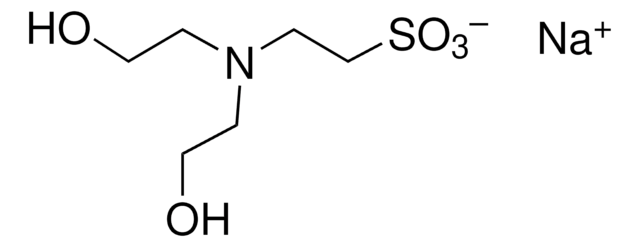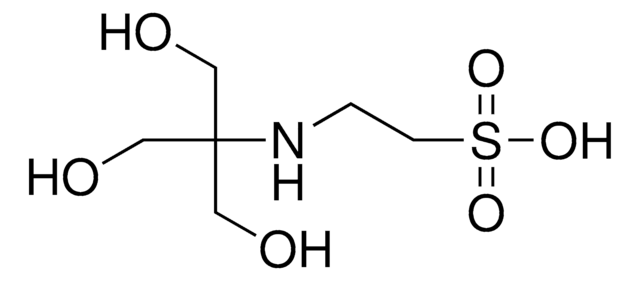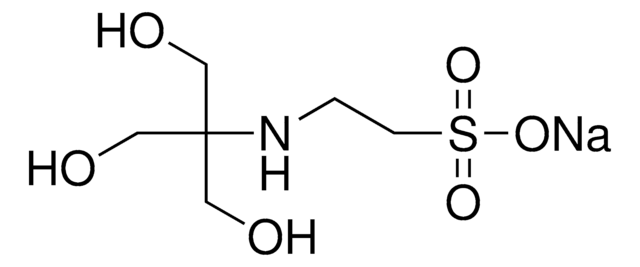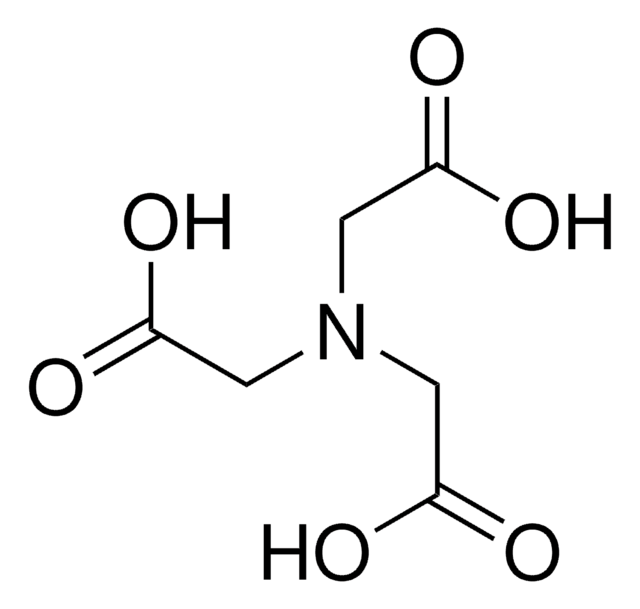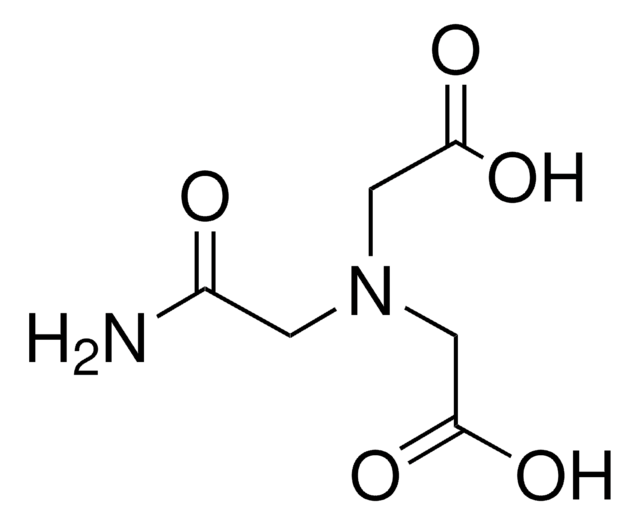B9879
BES
≥99.0% (titration)
Synonym(s):
2-(bis(2-hydroxyethyl)amino)ethane sulfonic acid, n,n-bis[2-hydroxyethyl]-2-aminoethanesulfonic acid, N,N-Bis(2-hydroxyethyl)-2-aminoethanesulfonic acid, N,N-Bis(2-hydroxyethyl)taurine
About This Item
Recommended Products
Assay
≥99.0% (titration)
form
crystalline
storage condition
dry at room temperature
color
white
pH
2.5-5.0 (25 °C, 213.3 g/L)
useful pH range
6.4-7.8
pKa (25 °C)
7.1
solubility
water: 0.5 g/mL, clear, colorless
density
1.30 g/cm3 at 20—25 °C
1.35 g/cm3 at 20—25 °C
application(s)
clinical research
diagnostic assay manufacturing
general analytical
life science and biopharma
storage temp.
room temp
SMILES string
OCCN(CCO)CCS(O)(=O)=O
InChI
1S/C6H15NO5S/c8-4-1-7(2-5-9)3-6-13(10,11)12/h8-9H,1-6H2,(H,10,11,12)
InChI key
AJTVSSFTXWNIRG-UHFFFAOYSA-N
Looking for similar products? Visit Product Comparison Guide
Related Categories
General description
Application
Features and Benefits
- Suitable for Cell Culture media and as a Buffering solution in Biochemical and Molecular Biology Research
- Effective Buffering from pH 2.5-5.0 (25 °C, 213.3 g/L) with a pKa of 7.1 (25 °C)
- Tested to confirm low levels of heavy metal contamination, ensuring suitability for various applications
Other Notes
comparable product
Storage Class Code
11 - Combustible Solids
WGK
WGK 3
Flash Point(F)
Not applicable
Flash Point(C)
Not applicable
Personal Protective Equipment
Regulatory Listings
Regulatory Listings are mainly provided for chemical products. Only limited information can be provided here for non-chemical products. No entry means none of the components are listed. It is the user’s obligation to ensure the safe and legal use of the product.
JAN Code
B9879-1KG:
B9879-RSAMPLE:
B9879-250G:
B9879-BULK-PC:
B9879-25G:
B9879-100G:
B9879-5G:
B9879-VAR:
B9879-BULK:
Certificates of Analysis (COA)
Search for Certificates of Analysis (COA) by entering the products Lot/Batch Number. Lot and Batch Numbers can be found on a product’s label following the words ‘Lot’ or ‘Batch’.
Already Own This Product?
Find documentation for the products that you have recently purchased in the Document Library.
Customers Also Viewed
Our team of scientists has experience in all areas of research including Life Science, Material Science, Chemical Synthesis, Chromatography, Analytical and many others.
Contact Technical Service